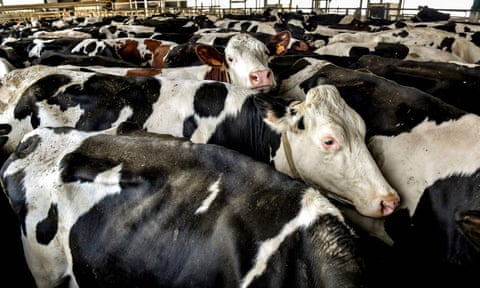Lawmakers from the European Parliament’s Agriculture Committee have backed a Commission proposal to give farmers more flexibility to slaughter animals on farm and thus reduce the need to transport animals, Euractiv reports.
Last December, the European Commission proposed to simplify the procedure for slaughtering animals on farm if there is a risk to the animal or the operator during transport.
Local abattoirs in Europe are being reduced in favour of large industrial structures, increasing transport times for live animals, causing stress and even physical suffering.
NGOs believe that the solution to the problem lies in on-farm slaughter using “mobile abattoirs” – trucks that travel from farm to farm with the appropriate equipment. Koen Van Dyck, a representative of the Commission’s DG Health, told the MEPs on the Agriculture Committee:
We are giving more flexibility to on-farm slaughter.
He emphasised that the only condition is that hygiene rules must be observed to guarantee food safety, as meat is sold on the European market and can even be exported, and it is no different from the products of industrial slaughterhouses. For example, a veterinarian must be present on the farm before slaughter.
MEPs generally supported the proposal, but Martin Häusling (Germany, Greens/EFA) said that “there is still a lot of bureaucracy” and complained in particular about the requirement for a vet to be present on site.
“There are millions of hunters in Europe and when they slaughter a deer, there is no vet on site,” added the German farmer-organiser, while Romanian MEP Daniel Buda (EPP) noted that “there are not enough vets to send them to where animals are slaughtered”.
The Commission rejected this criticism, as it considers the “pre-mortem examination” by a vet a “necessary” procedure to ensure that the meat is as safe as any other meat on the market. Buda added, calling for financial assistance to farms to buy treatment and processing equipment:
In Romania, there are not many slaughterhouses on the territory, so the Commission should now ensure that the member states apply this legislation.
This enquiry was one of those put forward by the European Parliament in the report of the Committee of Inquiry into Animal Welfare during transport in 2021.
Gilles Lebreton (France, ID) stated that the first French mobile slaughterhouse that was due to start operating in 2021, Bœuf Ethique, went bankrupt after only two years of operation due to a reduction in orders due to COVID animal confinement, rising costs and accumulated late payments. The MEP asked, acknowledging that the system works in other countries, such as Sweden:
Is the Commission aware of this failure in France?
The Scandinavian country, which is very reverent about animal welfare issues, is now a model in this field. In recent years, it has invested heavily in the production of high-quality animal products on a small scale.
Farmers using mobile slaughterhouses also “face challenges in terms of logistics and profitability”, reports the European Court of Auditors. Operating costs force them to “add value” and raise prices for consumers.
Irène Tolleret (France, Renew) said that clearly labelling the method of slaughter would allow farmers to “add value to their meat and strengthen customer loyalty”.
EU rules have banned on-farm slaughter since 2004. However, from 2021, farmers are allowed to bleed and stun animals on farm if there is a risk to the animal or operator during transport.
On 14 December 2023, the Commission adopted a delegated act extending the slaughter of animals on farms to sheep and goats – whereas previously experiments were limited to horses, cattle and pigs – in case of danger during transport. Each farmer can now kill up to three bulls, six pigs or nine sheep or goats a year.
According to the European Commission, more than a third of live animal journeys in the EU last between eight and 24 hours. For horses, cattle, sheep and goats, this accounts for more than 40 per cent of journeys.
